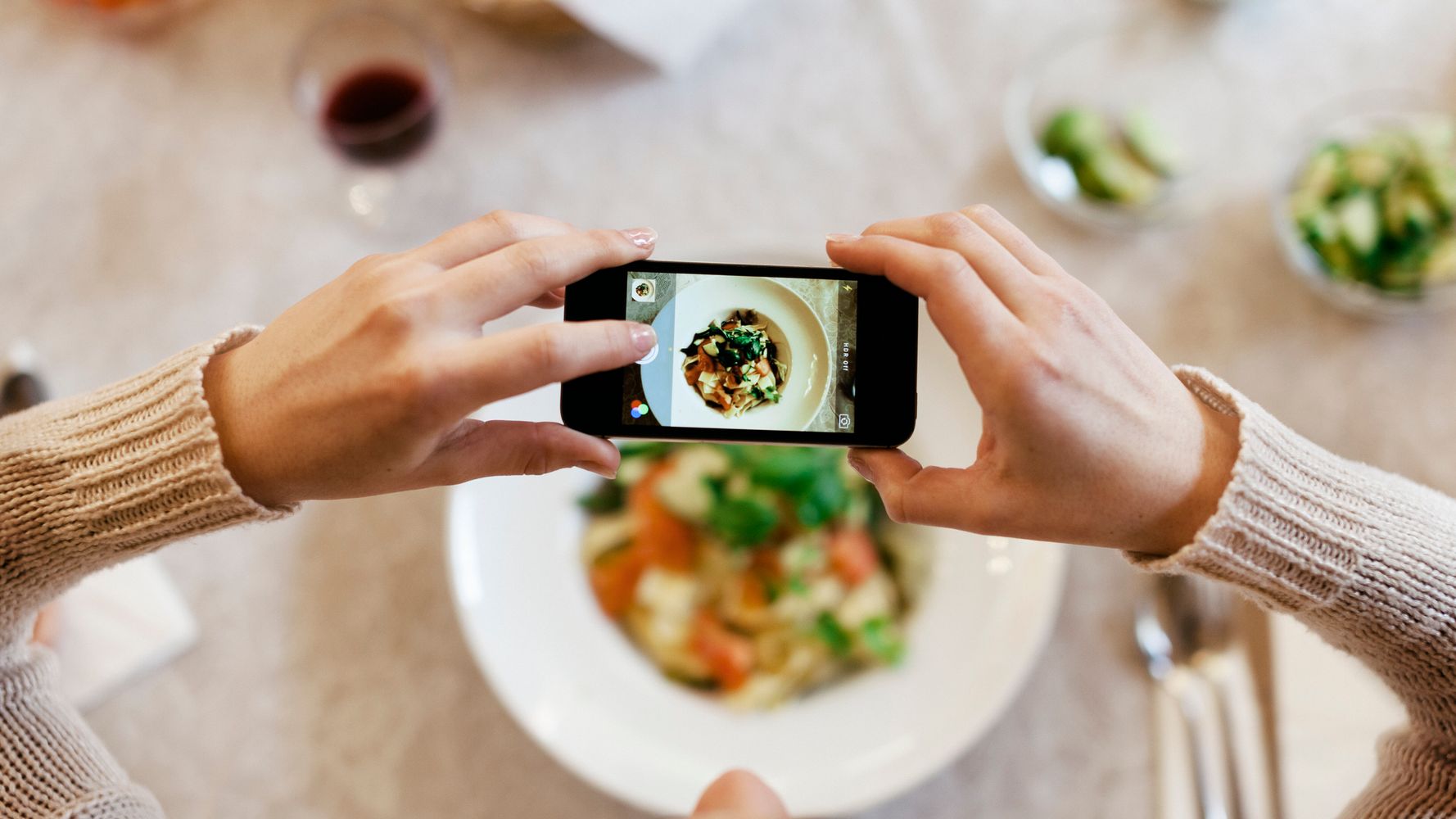TikTok has revived all sorts of things from days past, from Omegle chat pranks to sea shanties. “What I Eat In A Day” videos, where the video creator does a mini vlog of their food consumption in a day, have also resurfaced.
Dietitians, home cooks and even student athletes appear to have their finger in this pie. Some TikTokers have built a following through these videos, even without any nutrition or health messaging behind them. Turns out, we are just very curious (maybe even obsessed?) with what other people eat ― and how that plays a role in their overall life.
The “What I Eat In A Day” concept first blossomed on YouTube, often as a video series on the creator’s channel. The creator might decide to make these videos on their own accord or in response to requests from viewers.
“If you are striving to be like an influencer because there’s something that you admire about that person, you might have a curiosity about what that person is doing in their everyday life,” said Carolina Guizar, a registered dietitian and certified intuitive eating counselor based in New York City.
If people have interest in pursuing health, they may have genuine curiosity about what people eat, especially if it’s someone who has the body you hope to attain.
“People think if they can copy the behaviors of someone they find attractive, they will somehow look the same,” said Lauren Muhlheim, a psychologist and director of Eating Disorder Therapy LA.
So while watching these videos may seem harmless, experts aren’t convinced that’s the case, and they believe the clips should ― at the very least ― be viewed with an eye to caution and nuance. Here’s why they can be damaging:
The videos can perpetuate the ‘thin is ideal’ belief
Generally speaking, most people who post “What I Eat In A Day” videos have a thin or conventionally attractive body, Muhlheim said. “This perpetuates that thin is better. A person in a large body is not going to be emulated for what they’re eating,” she said.
Even if the words “weight” or “calories” are not mentioned in the video, the visual image of a smaller-bodied person is enough to lead people to compare themselves to it, said Sarah Adler, a clinical psychologist and associate professor at Stanford University’s Department of Psychiatry.
“The human brain is hard-wired to make comparisons, regardless of how healthy or unhealthy our relationship is with food,” Adler said. “Any time we’re presented with information, we start comparing ourselves to what we’re seeing. And visual stimuli is actually the biggest trigger for that comparison.”
Seeing the same type of body shape over and over, coupled with reinforcement from praise in the comments section of the videos, can lead people to believe this is the norm or something that is ideal.
“The human brain is hard-wired to make comparisons, regardless of how healthy or unhealthy our relationship is with food.”
– Sarah Adler
The videos may mislead viewers into believing there is a one-size-fits-all approach to eating and body size
If the video creator is using the video to share how they “got healthy” or lost weight, “it is a gross misunderstanding of body diversity and the role of genetics, that not everyone can have a conventionally attractive body,” Muhlheim said.
One positive observation from experts is what isn’t in many of TikTok’s “What I Eat In A Day” videos: mentions of weight loss, encouraging people to follow exactly what the creator does, or specific calorie counts (a departure from early iterations of the videos). But unfortunately, Guizar said, people still tend to take what they see and apply it directly to their lives so they can be “healthy” like the person in the video.
“Many of us have bought into the mindset that if someone else can do it, then we should be able to do it too. And that’s also the mantra of so many in the food and diet industry,” added Ayana Habtemariam, a registered dietitian and certified intuitive eating counselor based in Arlington, Virginia.
But when watching, it’s difficult for people to put what they see in the context of their circumstances, Adler said. “What I Eat In A Day” videos appear to provide an easy-to-follow recipe to achieve what they desire, steering them further away from learning how to think critically about food and nutrition and its role in their individual lives.
The videos may breed comparison and dissatisfaction with your eating patterns
These videos also may help fuel an obsession around food and what other people are eating, Adler said. Seeing the person you admire choose certain ingredients over others may reinforce a fear or belief you had regarding that ingredient, or make you question whether your own food choices are bad.
Besides this, if a viewer is experiencing food insecurity or food scarcity (where they don’t have access to foods they want or enjoy), they might feel shame from comparing their situation to someone with more food abundance.
If you’re comparing your eating patterns and they don’t measure up, Adler said, over time it can lead to anxiety over your appearance, disordered eating behaviors and lower self-esteem. This is especially true for people with a history of eating disorders or disordered eating, who are more vulnerable to comparing and being dissatisfied with their diet and bodies.
The videos place unnecessary emphasis on the eating windows
While you may argue that these videos simply serve as food and recipe inspiration, Habtemariam questioned why they need to be framed within the confines of a day.
Putting it in the context of a day quantifies the food and allows the viewer to compare it with their eating pattern over the day, which can lead them to become more hung up on achieving an identical or similar day of eating. This could even include how often someone in the video is eating and when ― another part of diet that is different for everyone.
If the videos show just a single meal, comparing your diet to the video creator’s is harder to do, Muhlheim added.
It could affect the video creator’s mental health over time
If the video creators have disordered habits, viewer praise in the comments section can reinforce these behaviors.
“I do feel some of the video creators are seeking validation for their decisions,” Habtemariam said, although she acknowledged it may be unknowingly. Sometimes they don’t always get that positive feedback and that can negatively affect their confidence.
“Many of us have bought into the mindset that if someone else can do it, then we should be able to do it too. And that’s also the mantra of so many in the food and diet industry.”
– Ayana Habtemariam
Do experts believe these videos should be banned or simply reframed?
All four experts said the majority of “What I Eat In A Day” videos are likely to cause more harm than good. If you have a history with disordered eating or a questionable relationship with food, it’s probably best to limit your interaction with such videos as they could unknowingly contribute to your issues.
Even if the video is trying to showcase how to practice intuitive eating (a concept where you focus on your food and listen to hunger and fullness cues), viewers may not look at it critically and see how the principle fits into their lifestyles, budget, food preferences and body’s genetic makeup. Having been socialized in a world obsessed with body weight and new diets, the viewer’s interpretation of the intuitive eating demonstration may continue to be shrouded by diet culture.
Instead of showing what they eat across a day, Muhlheim would prefer video creators post videos about a single meal to leave their overall diet open to interpretation.
Guizar also encouraged using content warnings for any food-related post, even recipe or single meal videos, so viewers are able to make an informed decision about whether they want to watch it.
And if you’re affected by the videos to the point where you think it may play a role in your mental health, try filling your feed with other videos and avoid the “What I Eat In A Day” content to teach your algorithm not to surface those options.
It may sound like an overcorrection or an overreaction, but many people’s relationship with food is already fraught. Why add to it?
If you’re struggling with an eating disorder, call the National Eating Disorder Association hotline at 1-800-931-2237.


